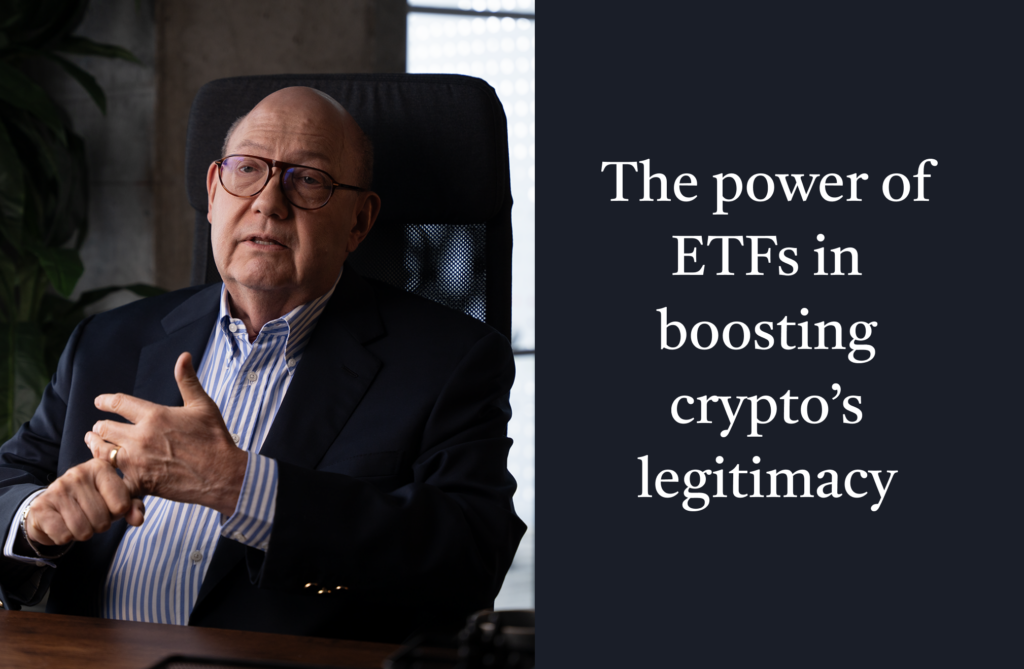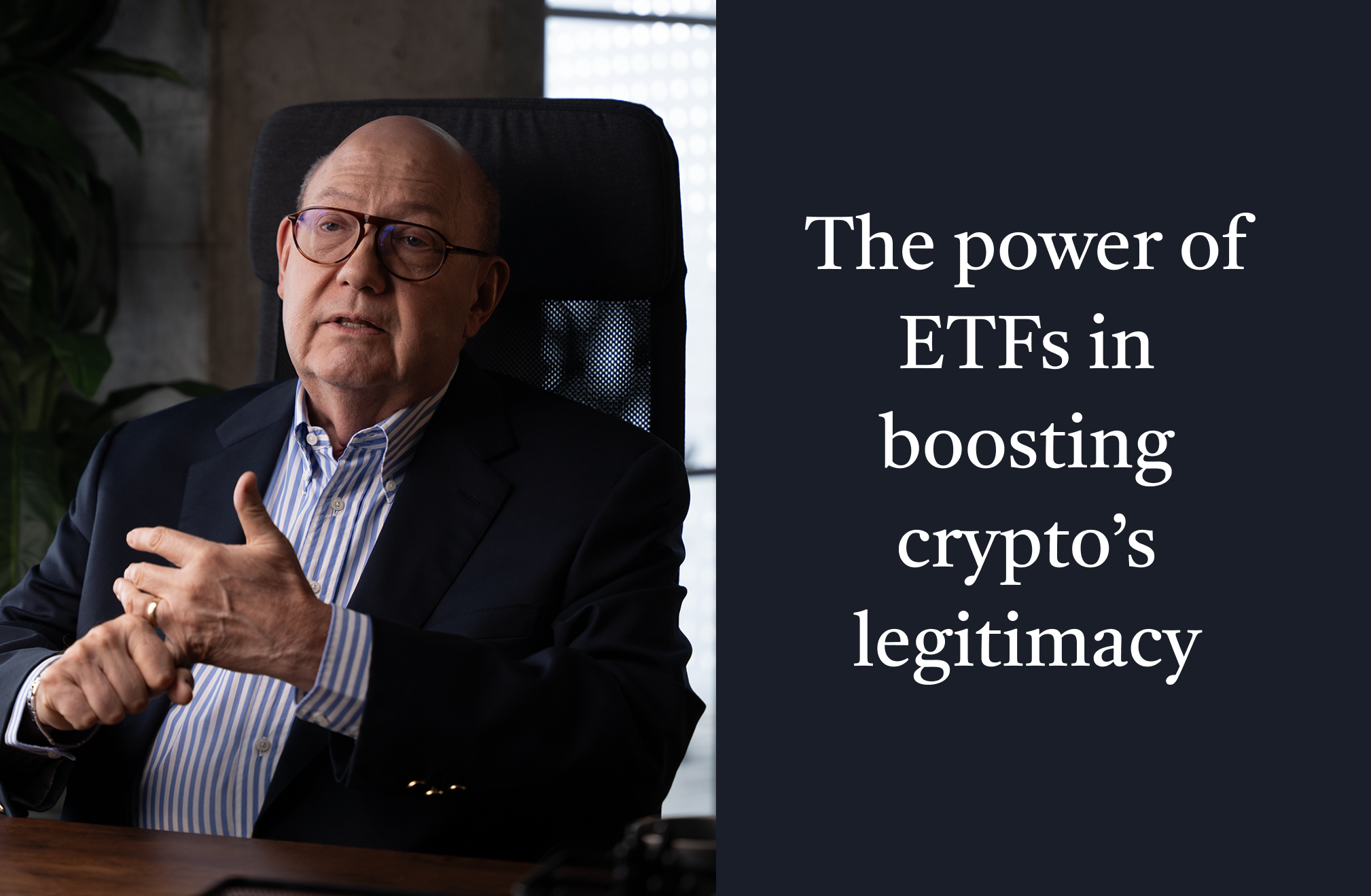
Since its launch, cryptocurrency has been viewed through a lens of skepticism, oftentimes by the movers and shakers of the financial sector. Parallels have been drawn between crypto and negative narratives, which have led to it being thought of as “dirty money” by some. Despite these views, however, cryptocurrency is increasingly gaining acceptance among both major institutions and everyday users. The narrative is finally shifting and even governments have now begun embracing crypto, which is helping to fuel adoption rates around the world. A key moment in this transformation was the approval of exchange-traded funds (ETFs) for Bitcoin and Ethereum, which have seen huge inflows over the past year from investors outside the crypto space.
It warrants reflection on how institutional adoption and exchange-traded funds (ETFs) are impacting crypto adoption and helping to boost crypto’s legitimacy among mainstream users.
Institutional adoption is boosting crypto’s legitimacy
Major institutions are playing an increasingly important role in the crypto space, which marks a striking shift from their crypto skepticism in previous years. Once thought of as a fringe investment, and an asset better suited to tech experts, cryptocurrency has now gained full recognition among mainstream financial institutions as a legitimate asset class and means of payment. Industry giants such as JP Morgan, Fidelity and BlackRock offer crypto-related investment products and services, and trading platforms, which have helped enhance the credibility of digital currencies, as well as their potential.
This institutional investment is particularly relevant among older investors, who tend to rely on the stability and authority of trusted financial institutions. As these organizations adopt a more pro-crypto stance, they signal to more cautious demographics that digital currencies are no longer as risky or speculative as they were once considered. Rather, they are now an established part of the mainstream investment space, boosting confidence among more traditional investor profiles.
Shifting government attitudes
For years, governments have viewed cryptocurrency with skepticism and often seen it as a potential threat or tool for illicit activities. However, the Trump Administration has instigated a shift in perception by adopting a pro-crypto stance, which began in Donald Trump’s 2024 presidential campaign. Later, in March 2025, President Trump announced the establishment of the Strategic Bitcoin Reserve and a Digital Assets Stockpile, with the aim of positioning the U.S. as a leader in the digital asset space. This initiative would involve leveraging the government’s existing seized cryptocurrency holdings, estimated to exceed 200,000 BTC.
But the Administration’s commitment extends beyond asset accumulation. Their pro-crypto stance also include regulatory reforms that will help foster innovation. In his first week in office, President Trump signed an executive order to support the responsible growth of digital assets and blockchain technology across different sectors. This approach demonstrates how the new government aims to balance technological advancement with regulatory oversight and ensure that the U.S. remains at the forefront of global innovation in digital assets. This is yet another clear sign that cryptocurrencies are to be trusted, thereby boosting crypto’s legitimacy.
Growing adoption across demographics
The 11 spot Bitcoin Exchange-Traded Funds (ETFs) were officially approved by the U.S. Securities and Exchange Commission (SEC) on the 10th of January, 2024. This was a milestone for the crypto space, and marked a turning point in crypto investment, providing even traditional investors with accessible and regulated options to gain exposure to Bitcoin. Later in the year, on the 23rd of May 2024, the SEC also approved another set of spot Ethereum ETFs, which began trading on the 23rd of July.
Following both approvals, the crypto market experienced a substantial surge in investor interest and capital inflows. The introduction of Bitcoin ETFs led to a significant increase in trading volumes, enhancing market liquidity and stability. In turn, this played a vital role in boosting crypto’s legitimacy as traditional investors gained more confidence in the market. The ETFs provided a safer, regulated and more familiar way for institutional and retail investors to engage with digital assets, introducing the concept into mainstream conversations. According to recent data, in the U.S. alone, approximately 28% of American adults (some 65 million people) own crypto today.
For more of my reflections and insights on cryptocurrency, technology and entrepreneurship, take a look at the other articles on my blog, visit my YouTube channel and follow @williamerbey on social media.






